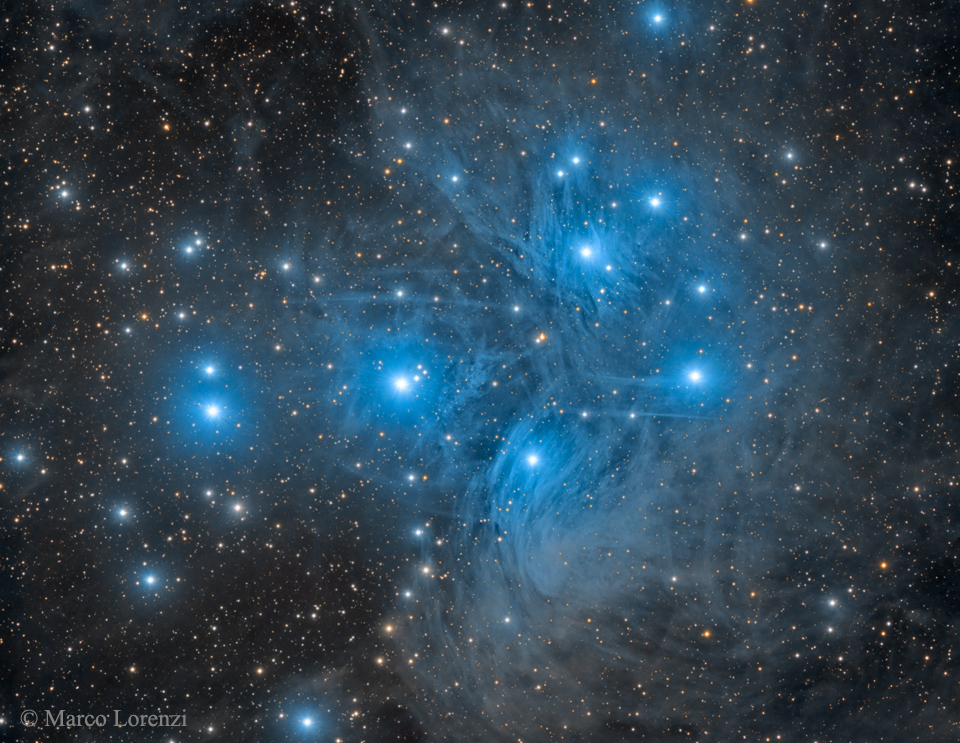
Wednesday, June 17, 2015
Astro picture for the day/ Review of James Burke's Connections
Image Credit & Copyright: Marco Lorenzi (Glittering Lights)
I posted this at amazon; for some strange reason, it's hidden on there. This review kind of reexpresses my "Origins of Mathematical knowledge post" in terms context as described by Susanne K Langer.
"Connections and "The Day the Universe Changed"(there's also "After the Warming" which tries to connect everything in terms of global warming; for instance, that maybe the Minoans and Myceneans civilizations collapsed because of shift of climate, and that maybe science and technology started when things got cold . . . that early Homo Sapiens and even Neanderthals that drew pictures in caves used fire to survive for instance) are fun things to think about. They are worth thinking about in terms of thinking about a mystery. What causes change in human society?
One of my favorite examples of what I'm seeing in James Burke's ideas here is David Goodstein, in his mechanical universe, points out how the British made their lightning rods with a spherical top because the King(I think it's the same King George found in the 'Declaration of Independence"), and not just pointed tip. There's scientific connections and there's these cultural connections like the lightning rod example above. James Burke seems to want to show all these cultural affects to, mostly technological developments. Every now and then, he requires some science connections.
The cultural connecitons, as I'm calling them, is all fine and good. To me, the model for scientific discovery is the discovery of the solar system. That we couldn't just send off some spacecraft to a polar orbit, look straight down, and say, "Hey, look at that! The planets go around the sun, and not the other way around." We had notice oddities, like the retrograde motion of the planets, the changing phases of the moon, to decode from our current perspective(our cultural biased conceptions/cultural connections), the facts/logic of the solar system.
Aristotle had all kinds of these vague notions of physics that didn't help much - bodies tend to stay put because that's their natural place to be. And, things need a force to keep them moving. It took Galileo to see the underlying structural relations of friction to tease out the amazing fact that different masses fall at the same rate in a vacuum. He also had some logic that drove him; if two masses are connected, then two contradictory things must happen - 1) they must fall slower, because the lighter mass is pulling up from the heavier mass, and 2) they must go faster because they are a combined heavier mass now.
Susanne K Langer in her "an introduction of Symbolic Logic" points out, chapter 3 - Essentials of logical structure, there's personal conceptions with different contexts of the same concept. If you say one word, you have all kinds of personal contextual ideas of what relates to that idea. In a sentence, the word run generally makes sense only with me telling you to run. You don't generally say, houses run the race. You might say house runs the world, depending on the meaning of 'house.' An example in the book is "these should be rubbed together in a smooth paste." Here, you know this refers to flour, sugar, and so on. But, this could also refer to a mechanic putting together some sealant. The conception can take on multiple contexts. There's often a cultural flavor to most people's conceptions. James Burke, in his Connections seems to want to find the technological origins in these cultural flavors.
To see people who have to overcome their cultural biases, for whatever reasons. A people goes to war with another, the climate changes, and those gods must not have been the real gods. That style of dress doesn't work out in the woods like it does in the ballroom, or something like that! As my David Goldstein example of the lightning rod shows, there are these types of connections, but the real connections, as I like to call them, are these underlying structural relations, that we end up calling mathematics and logic. These things come about in much the same way we discovered the solar system.
James Burke's Connections here, and his other works really, kind of mix these cultural connections and real connections in a fun way. But, some of these connections are not always quite correct. For instance, he says the longbow led to the cannon - not quite in my opinion perhaps. But, in showing the history of the longbow, we see some great cultural connections of the medieval society of the Knight on horseback.
When I looked at some of the real connections, I noticed some remarkable connections between them and what Jacob Bronowski points out about the nature and origin of mathematical knowledge, in his "Origins of Knowledge and Imagination." I'll leave a link to my right up about that in the comments section."
Subscribe to:
Post Comments (Atom)

No comments:
Post a Comment